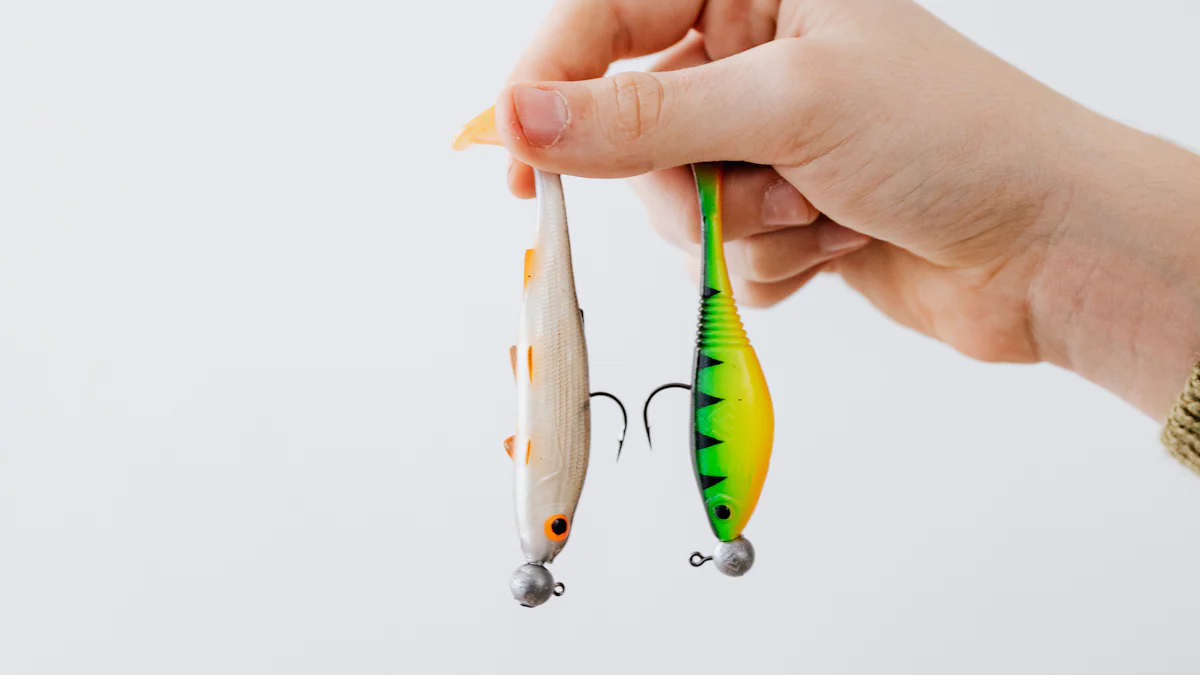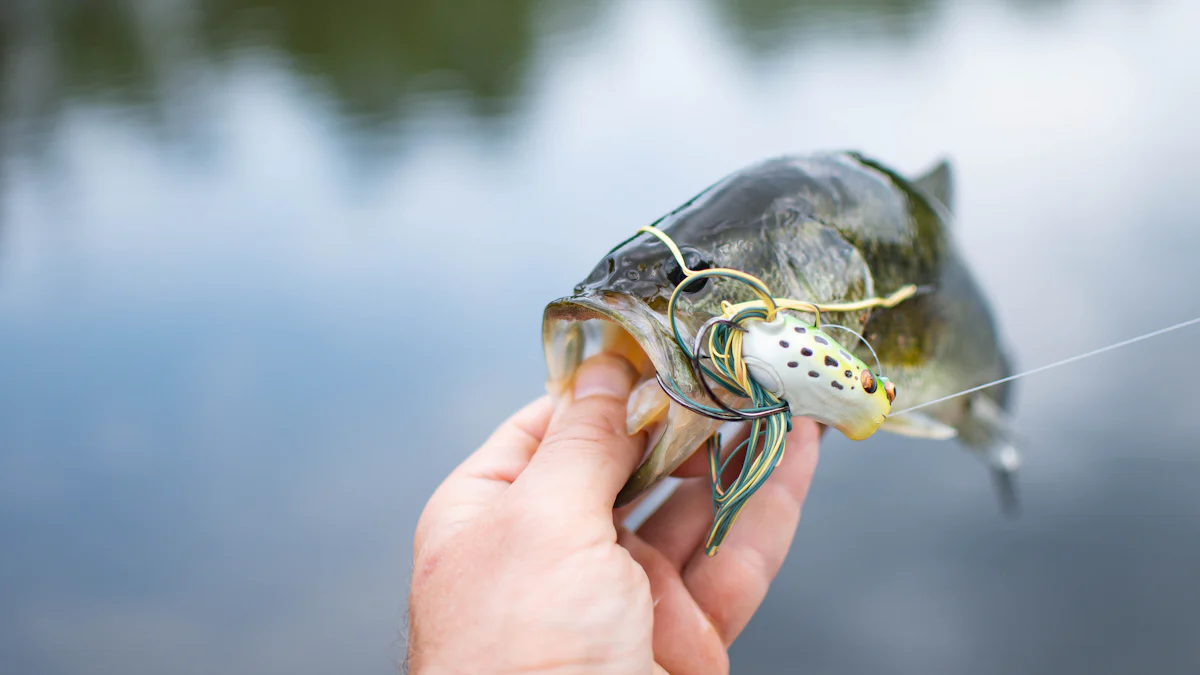
Fishing with dried mealworms has become a game-changer for anglers seeking effective and convenient bait. Their high protein content and natural appeal make them irresistible to fish like bluegill, perch, and trout. Unlike live bait, fishing with dried mealworms offers unmatched ease of storage and transport. They perform well in various fishing environments, from calm lakes to flowing rivers. Anglers also value their versatility, using them on hooks, jigs, or even as an addition to other bait. These qualities make fishing with dried mealworms a reliable choice for those aiming to enhance their fishing experience.
Key Takeaways
- Dried mealworms are a high-protein bait that effectively attracts various fish species, including bluegill, perch, and trout.
- They offer unmatched convenience, requiring no refrigeration and having a long shelf life, making them ideal for spontaneous fishing trips.
- Soaking dried mealworms before use can enhance their effectiveness by softening their texture and helping them sink faster.
- Dried mealworms excel in colder waters, providing fish with a nutrient-rich food source when other baits may falter.
- Their versatility allows anglers to use them in multiple fishing scenarios, from calm lakes to flowing rivers, and even in groundbait mixes.
- While they may not replicate the movement of live bait, their nutritional value and ease of use make them a valuable addition to any tackle box.
- Dried mealworms can be a cost-effective choice for both casual and serious anglers, balancing convenience with performance.
Effectiveness of Fishing With Dried Mealworms

Which Fish Species Are Attracted to Dried Mealworms?
Dried mealworms have proven to be a magnet for various freshwater fish species. Their high protein content and natural appeal make them particularly effective for attracting fish like bluegill, crappie, perch, trout, and even bass. These fish are drawn to the mealworms’ rich nutritional profile, which mimics the benefits of their natural prey. Anglers targeting panfish often find dried mealworms to be a reliable choice, especially in calm lakes or slow-moving rivers.
In colder waters, dried mealworms shine as an effective bait option. Many fish species become less active in low temperatures, but the protein-packed mealworms provide an enticing energy source that fish cannot resist. This makes them a valuable tool for anglers fishing during cooler seasons or in colder climates.
Additionally, dried mealworms work well in diverse fishing environments. Whether fishing from a dock, a boat, or along a riverbank, these versatile baits can adapt to the situation. Their ability to attract a wide range of fish species makes them a go-to option for both beginners and experienced anglers.
How Do Dried Mealworms Perform Compared to Live Bait?
When comparing dried mealworms to live bait, each has its strengths. Dried mealworms offer unmatched convenience. They are easy to store, transport, and handle, making them ideal for anglers who value simplicity. Unlike live bait, dried mealworms do not require special care or refrigeration, and they have a long shelf life. This makes them a practical choice for spontaneous fishing trips or extended outings.
Live bait, such as worms or minnows, has the advantage of mimicking natural prey more closely. The movement and scent of live bait can sometimes trigger a stronger response from fish, especially in highly competitive fishing areas. However, dried mealworms compensate for this by being rich in protein and fat, which appeals to fish on a nutritional level.
Dried mealworms also perform well in specific scenarios where live bait might fall short. For instance, in colder waters, live bait may become sluggish and less effective, while dried mealworms maintain their appeal. Additionally, dried mealworms can be soaked to sink faster, making them suitable for targeting bottom-dwelling fish.
Pros and Cons of Fishing With Dried Mealworms
Advantages
Fishing with dried mealworms offers several compelling benefits that make them a favorite among anglers. Their high protein content provides fish with essential nutrients, enhancing their growth and overall health. This nutritional value makes dried mealworms an irresistible option for species like trout, perch, and bluegill. Fish often perceive them as a natural and satisfying food source.
Dried mealworms excel in convenience. Anglers can store them for extended periods without refrigeration, making them ideal for spontaneous fishing trips or long outings. Their durability ensures they remain effective on the hook, even after prolonged exposure to water. Unlike live bait, dried mealworms eliminate the need for special care, reducing preparation time and effort.
Versatility is another significant advantage. Anglers can use dried mealworms in various fishing scenarios, from calm lakes to flowing rivers. They perform well in different weather conditions, including colder waters where live bait may lose its effectiveness. Additionally, dried mealworms can be incorporated into groundbait mixes or used alongside other bait to enhance their appeal.
"I’ve been using dried mealworms in boilies and groundbait mixes for over 18 months. They’ve proven effective for carp, tench, bream, and barbel," shared one experienced angler. This versatility makes them a valuable addition to any fishing strategy.
Disadvantages
Despite their many advantages, dried mealworms have some limitations. One notable drawback is their lack of movement and scent compared to live bait. Fish often respond more actively to the natural motion and aroma of live prey, especially in competitive fishing environments. This can make live bait a better choice for certain situations.
Some anglers also find that dried mealworms may not sink quickly enough in deeper waters unless soaked beforehand. This extra step can add minor inconvenience, particularly for those who prefer a straightforward approach. Additionally, while dried mealworms are generally well-received by fish, their hard exoskeleton may deter smaller or less aggressive species.
Another potential downside is the cost. Dried mealworms can be more expensive than traditional live bait options like worms or minnows. For casual anglers or those on a budget, this higher price point might not justify the investment, especially if fishing trips are infrequent.
"While dried mealworms are effective, the smell can be off-putting for some users," noted one reviewer. This sensory aspect may discourage certain anglers from using them regularly.
How to Use Dried Mealworms Effectively

Preparation Tips
Proper preparation can make a significant difference when using dried mealworms as bait. While they are ready to use straight out of the package, a few simple steps can enhance their effectiveness. Soaking dried mealworms in water for 10–15 minutes softens their texture and helps them sink faster. This adjustment makes them more appealing to fish, especially bottom-dwelling species like carp or catfish. Some anglers even soak them in flavored attractants to boost their scent and increase their allure.
For anglers targeting smaller fish, cutting dried mealworms into smaller pieces can make them easier for fish to bite. This approach works particularly well for species like bluegill or crappie. Additionally, pairing dried mealworms with other bait, such as worms or artificial lures, can create a more enticing presentation. Combining them with groundbait mixes also proves effective, as it spreads their scent and nutritional appeal across a larger area.
Storage is another critical aspect of preparation. Keeping dried mealworms in a cool, dry place ensures they remain fresh and effective for longer periods. Their long shelf life makes them a reliable option for anglers who want to be ready for spontaneous fishing trips.
Best Fishing Scenarios for Dried Mealworms
Dried mealworms excel in specific fishing scenarios, making them a versatile choice for anglers. They perform exceptionally well in freshwater environments, including calm lakes, slow-moving rivers, and ponds. Their high protein content and natural appeal attract a variety of fish species, such as trout, perch, and bass. Anglers often find them particularly effective during colder months when fish seek nutrient-rich food sources to maintain energy levels.
Fishing with dried mealworms proves advantageous in situations where live bait may not be practical. For instance, during extended fishing trips, their durability and ease of storage eliminate the need for refrigeration or special care. They also shine in areas where live bait is scarce or prohibited due to local regulations.
Using dried mealworms in groundbait mixes or as part of a multi-bait strategy enhances their effectiveness. One experienced angler shared,
"I’ve been using dried mealworms in boilies and groundbait mixes for over 18 months. They’ve proven effective for carp, tench, bream, and barbel."
This versatility allows anglers to adapt their approach based on the target species and fishing conditions. Whether fishing from a dock, a boat, or along a riverbank, dried mealworms provide a reliable and convenient bait option.
Cost and Value Analysis of Fishing With Dried Mealworms
Price Comparison With Other Bait Options
Dried mealworms stand out as a premium bait option, offering unique advantages over traditional live bait. While their price may initially seem higher, their long shelf life and ease of storage often offset the cost. Unlike live bait, which requires refrigeration and constant care, dried mealworms remain effective for months when stored properly. This durability makes them a cost-effective choice for anglers who fish sporadically or plan extended trips.
When compared to other bait options like worms, minnows, or artificial lures, dried mealworms provide a balance of convenience and effectiveness. Live bait, though often cheaper, demands more effort to maintain and transport. Artificial lures, on the other hand, lack the natural nutritional appeal that dried mealworms offer. For anglers targeting species like trout, perch, or bluegill, the high protein content of dried mealworms justifies their slightly higher price point.
Additionally, dried mealworms excel in colder waters where other bait options may falter. Their resilience and ability to attract fish in challenging conditions add value that many anglers appreciate. This versatility ensures that the investment in dried mealworms pays off across a variety of fishing scenarios.
Are They Worth the Investment for Casual vs. Serious Anglers?
The worth of dried mealworms depends largely on the angler’s goals and frequency of fishing. For casual anglers, dried mealworms offer unmatched convenience. Their long shelf life eliminates the need for last-minute bait purchases, making them ideal for spontaneous fishing trips. Casual anglers also benefit from their versatility, as dried mealworms perform well in diverse environments without requiring special preparation.
Serious anglers, who often prioritize performance and adaptability, may find dried mealworms equally valuable. Their effectiveness in attracting a wide range of fish species, combined with their durability during extended outings, makes them a reliable choice. Serious anglers targeting specific species like carp or bass can enhance their fishing strategy by incorporating dried mealworms into groundbait mixes or pairing them with other bait.
While dried mealworms may not always outperform live bait in terms of movement and scent, their unique advantages make them a worthwhile investment for both casual and serious anglers. Their ability to adapt to various fishing methods and environments ensures that they remain a valuable addition to any tackle box.
Dried mealworms offer anglers a unique combination of convenience, versatility, and effectiveness. Their high protein content makes them highly attractive to fish, while their long shelf life ensures they remain a practical choice for extended fishing trips. Anglers appreciate their adaptability in various water conditions and their ability to target specific fish species. Although they may not replicate the movement or scent of live bait, their ease of use and reliability make them a valuable addition to any fishing strategy. Whether for casual outings or serious fishing endeavors, dried mealworms prove their worth time and again.
FAQ
What Are Dried Mealworms?
Dried mealworms are a popular alternative to traditional live bait. These dehydrated larvae of the darkling beetle offer a high-protein, nutrient-rich option for fishing. Their long shelf life and ease of use make them a favorite among anglers seeking convenience without sacrificing effectiveness.
What Are the Advantages of Using Dried Mealworms for Fishing?
Dried mealworms combine practicality with performance. They attract fish with their natural appeal and high protein content. Anglers can use them in various ways, such as baiting hooks, enhancing jigs, or topping other bait. Their durability and ability to remain effective in different conditions add to their versatility.
Why Are Dried Mealworms Beneficial for Fishing in Colder Waters?
In colder waters, dried mealworms excel as bait. Fish often seek nutrient-dense food sources to maintain energy in low temperatures. The protein-packed nature of dried mealworms provides an enticing option for fish, ensuring they remain effective even when live bait may lose its appeal.
How Do Dried Mealworms Compare to Live Bait?
Dried mealworms offer unmatched convenience. Unlike live bait, they require no refrigeration or special care. Their long shelf life makes them ideal for spontaneous trips or extended outings. While live bait may have the advantage of movement and scent, dried mealworms compensate with their nutritional value and adaptability.
Can Dried Mealworms Be Used for Other Animals?
Yes, dried mealworms cater to a variety of animals beyond fish. Poultry, wild birds, turtles, lizards, hedgehogs, and even squirrels benefit from their high protein content. These versatile larvae support muscle development, immune health, and overall vitality in many species.
How Should Dried Mealworms Be Prepared for Fishing?
Preparation enhances the effectiveness of dried mealworms. Soaking them in water for 10–15 minutes softens their texture and helps them sink faster. Some anglers add flavored attractants to boost their appeal. Cutting them into smaller pieces can also make them more accessible to smaller fish.
Are Dried Mealworms Suitable for Beginners?
Absolutely. Dried mealworms are beginner-friendly due to their ease of use and storage. They eliminate the need for handling live bait, making them less intimidating for new anglers. Their versatility allows beginners to experiment with different fishing methods and environments.
Do Dried Mealworms Work in All Fishing Environments?
Dried mealworms perform well in various freshwater environments, including lakes, rivers, and ponds. They adapt to different weather conditions and water temperatures. Their ability to attract a wide range of fish species makes them a reliable choice for diverse fishing scenarios.
Are Dried Mealworms Cost-Effective?
While dried mealworms may have a higher upfront cost than live bait, their long shelf life and minimal maintenance make them cost-effective in the long run. Anglers save time and effort by avoiding frequent bait purchases and refrigeration needs.
What Fish Species Are Most Attracted to Dried Mealworms?
Fish like bluegill, crappie, perch, trout, and bass find dried mealworms irresistible. Their high protein content mimics the benefits of natural prey, making them a go-to option for targeting these species. Anglers often report success using them for panfish and other freshwater favorites.


